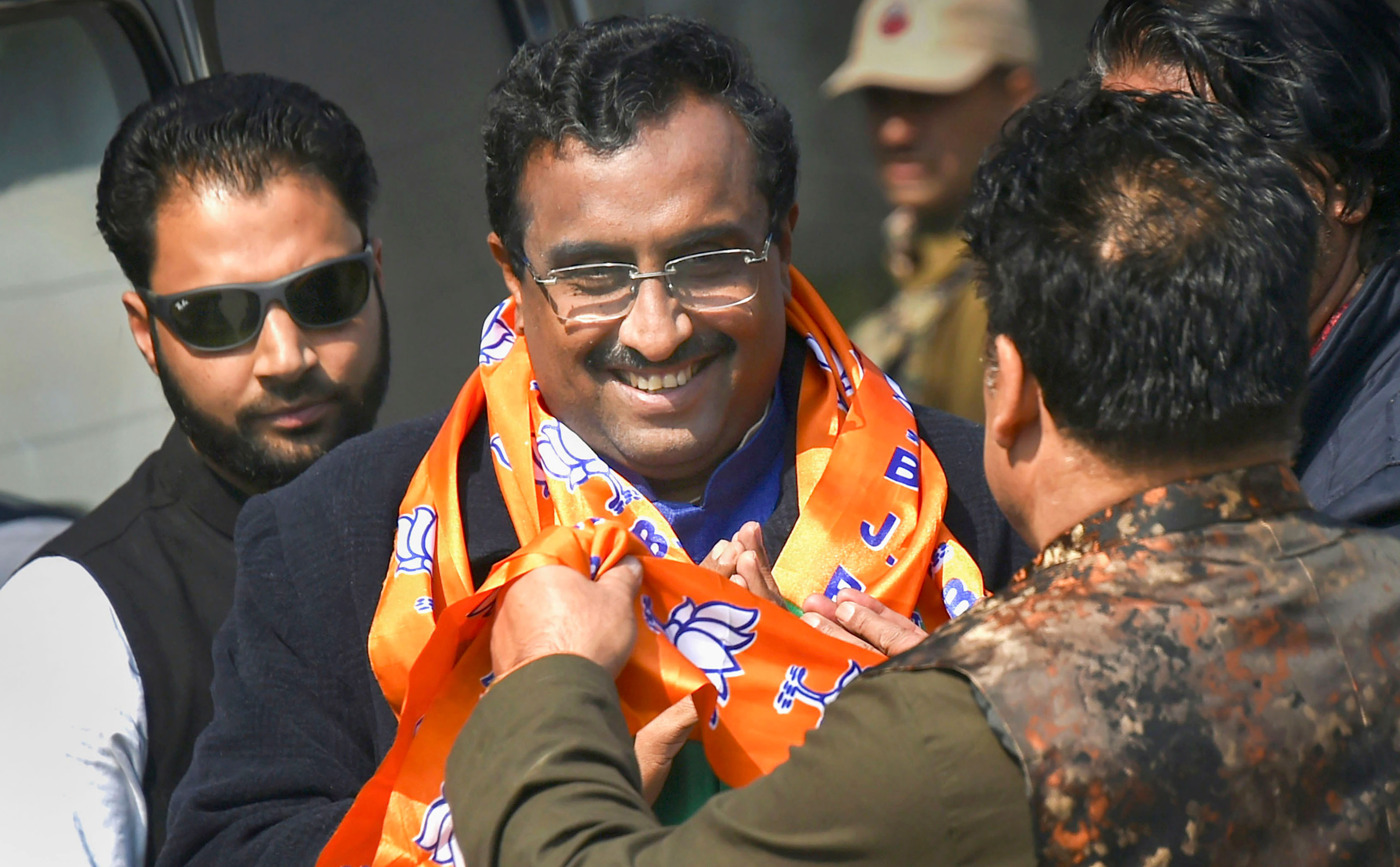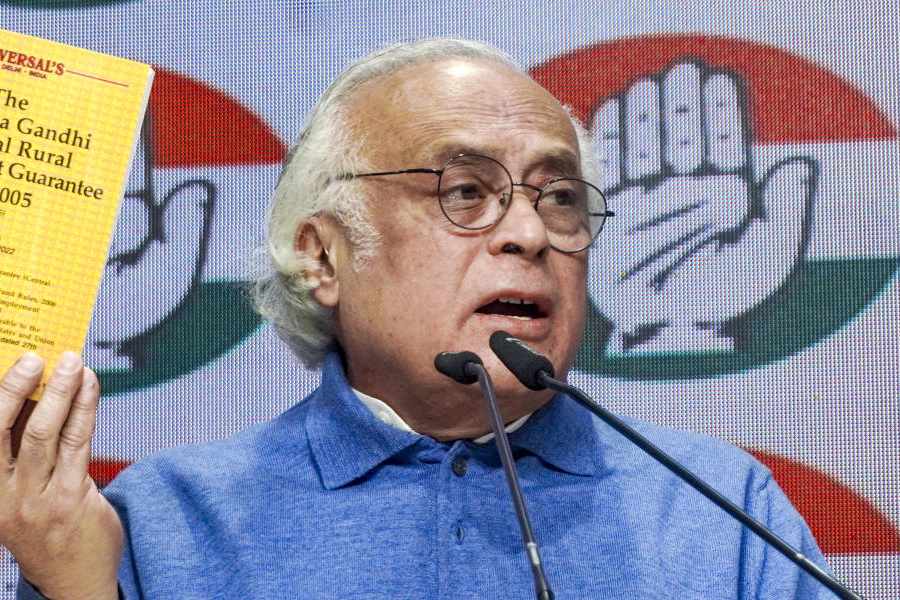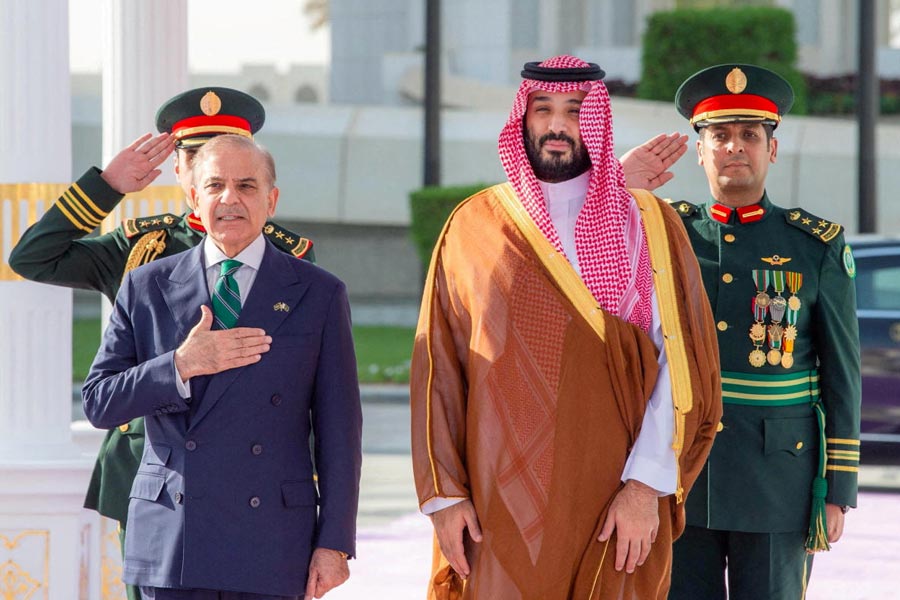Official word has been very limited on the Chinese intrusions in Ladakh and the dust-ups and “troop mobilisation” along the Line of Actual Control and the Modi government has avoided its usual chest-thumping jingoism, creating an opportunity for de-escalation, according to diplomats and experts.
China, too, has not said much although foreign minister Wang Yi held his annual media conference on Sunday.
The sum and substance of what has been put out officially is a terse denial of the Chinese allegation that Indian troops had crossed the LAC, resulting in skirmishes in Ladakh and Sikkim, a rejection of reports of detention of Indian soldiers at the borders, and a confirmation of face-offs dismissed as routine in an area where the boundary is not resolved.
Further, BJP national general secretary Ram Madhav, projected as a foreign policy expert, has confirmed to a television channel that there have been “certain flashpoints in three places in Ladakh and one in north Sikkim but they have all right now been taken care of”.
As for satellite images that show increased activity along the LAC in some places, Madhav’s contention was that this was regular army construction activity on the Indian side. He added that the enhanced activities on the Chinese side were being taken up by the authorities.Tweeting on the escalation, former foreign secretary Nirupama Rao, who had been an ambassador to China, said transgressions along the LAC were not new occurrences but lamented that the protocols established in 1993 to maintain peace along the border seemed to be fraying now after working satisfactorily for many years.
Pointing out that infrastructure development on the Indian side along the LAC has raised the threat perception on the Chinese side, she tweeted: “The 73-day stand-off in Doklam in Bhutan in 2017 created a new normal. The situation is more kinetic now….
“Given the absence of a line of separation and mutual distancing between sides, no jointly highlighted areas of difference of perception of the LAC, we are bound to see more such incidents which now, additionally, have potential to turn into armed confrontation and conflict.”
Rao warned that media narratives suck up space for quiet diplomacy.
Swaran Singh, chairperson of the JNU’s Centre for International Politics, Organisation and Disarmament, told The Telegraph that there had been a constant increase in the frequency of ingressions since Xi Jinping took over as Prime Minister in 2012 and that this was part of the leader’s plan for China to assert itself.
“Bullying behaviour has also increased under Xi. This has percolated down the chain of command, and so there are times when local commanders have asserted themselves,” professor Singh said.
“Doklam was part of this dynamic, as also what you see in Lipu Lekh. Look at the crass language (Nepal Prime Minister) K.P. Sharma Oli used. I can understand Nepal wants to claim the area, but is this the way to ratchet up tensions? And, would he have done so if he was not assured of support from elsewhere?” professor Singh pondered, echoing a view aired by Indian Army chief Manoj Naravane.
Professor Singh said it was possible that the escalation could have something to do with the domestic politics of China and be a reflection of the disjunction between Xi and the People’s Liberation Army.
“The CPPCC (Chinese People’s Political Consultative Conference) and the National People’s Congress are in session right now, and there has been some commentary in the media about a certain amount of dissent since the 19th Party Congress lifted the two-term limit on presidency. The PLA’s bullying in the South China Sea and along the LAC at this juncture could be a reflection of disjunction between Xi and the army…,. It won’t be for the first time. Recall the intrusion in southern Ladakh during Xi’s India visit in 2014?” Professor Singh said.
“If it is a case of the PLA making things difficult for Xi, then the developments along the LAC are tactical and we don’t have to worry too much about it. It will get resolved, possibly after Thursday when the two sessions end….. Agreed, there is a greater intensity this time, but it is still controlled by the two sides. Both governments have been very quiet, leaving space for existing mechanisms and diplomacy to work. Yes, the Chinese ingression in Galwan (Ladakh) is significant because they seem to be locating new areas to add to their tactical advantages,” he added.
On whether he saw a link between China’s actions along the LAC and in the South China Sea at a time when the world is dealing with a pandemic, Jabin T. Jacob, associate professor at the Department of International Relations and Governance Studies at Shiv Nadar University, said: “There is a general link — nothing specific — in that the Chinese will always take a forward posture on territorial disputes because this sells well to the domestic audience.
“They will also have an unfriendly posture towards countries close to the US…, or whom they perceive as too willing to do the US bidding because they are in strategic competition with the US. Again this sells well domestically but it also needs to be noted that the Chinese can’t conceive that countries like India can take an independent position on the Quad or the WHO that is not influenced by the US.” he added.
Sceptical of the projected gains at the informal summits at Wuhan and Chennai, Jabin T. Jacob, associate professor at the Department of International Relations and Governance Studies at Shiv Nadar University, said: “The agenda was not clear, there were
no joint statements but separate statements at the end of each occasion, which had differing emphases for each side. These meetings came about because both political leaderships found it politically convenient at that point in time and it was good theatre for both Modi and Xi who depend on personalising and identifying their country’s foreign policies with their own selves/images.”
“The shallowness of these meetings is clear from the fact that the so-called ‘strategic guidance’ from the leaders to their respective militaries to exercise restraint has not had the desired effect. Such guidance is in fact impossible to put into practice on the LAC without acknowledging that conditions under which earlier treaties and protocols were drawn up have changed….”
And, like Menon, Jacob too believes that frequent escalations are now inevitable post-Doklam. “
“The Chinese response to Doklam is essentially to scale up the number and nature of objections to Indian activity along the LAC, and the level of their own transgressions including in terms of numbers, nature and areas of dispute. Thus, even in the midst of Doklam, we had the violent confrontation at Pangong Tso (in Ladakh) where injuries were reported. And now in the latest instance too, at Pangong Tso, it appears PLA soldiers came armed with rods intending to cause serious injuries. There will be more such incidents on the LAC in the time ahead — This is a ‘new normal’,” he said.
Stating that he has only media reports to go by and sceptical about the conflicting numbers being mentioned in them about the mobilisation, Srikanth Kondapalli of the Centre for East Asian Studies at JNU said much was in the realm of speculation. “This is not a war-like situation at the moment. There is no credible information about large-scale mobilisation. Even if 60-80 tents have been pitched and we calculate on the basis of five per tent, that’s about 300-400 troops.”
Confident that the local-level confidence-building mechanisms will be activated, his assessment is that it could take anywhere between three weeks to 72 days to resolve.
“We have the 2013 template when the Chinese pitched tents in the DBO (Daulat Beg Oldi) sector for three weeks, and the Doklam example which took 72 days to resolve,” Kondapalli added.











